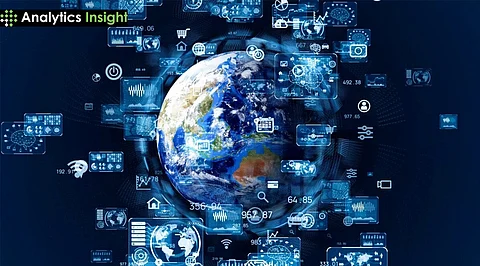

Edge AI, or Artificial Intelligence at the Edge, refers to the integration of artificial intelligence (AI) with edge computing. This approach enables AI computations to be performed directly on devices located at the edge of a network, such as sensors, cameras, or IoT devices, rather than in centralized cloud computing facilities.
Description: Thick Edge AI involves deploying multiple AI models on powerful edge servers or at the network periphery. It supports AI model training or retraining for sensitive data on-premises.
Use Cases: Suitable for applications requiring complex AI processing, such as data centers or large-scale IoT deployments.
Description: Thin Edge AI enhances the intelligence of existing sensors and devices by utilizing gateways, Industrial PCs (IPCs), and Programmable Logic Controllers (PLCs) for AI processing at the network edge.
Use Cases: Ideal for applications where devices need to be made smarter without significant hardware upgrades.
Description: Micro Edge AI enables direct AI integration into sensors, improving the scalability of intelligent systems. It empowers everyday connected devices to make autonomous decisions.
Use Cases: Suitable for applications requiring real-time processing with minimal latency, such as smart home devices or industrial automation.
Description: Embedded Edge AI involves integrating specialized AI chips directly into devices. This approach allows for efficient AI processing onboard IoT devices.
Use Cases: Common in consumer electronics and industrial devices where AI capabilities are built into the hardware.
Description: Distributed Edge AI combines elements of traditional AI and Edge AI by distributing tasks across multiple interconnected systems, including edge devices and central servers.
Use Cases: Useful for applications requiring both real-time processing and large-scale data analysis, such as autonomous vehicles or smart cities.
Edge AI processes data locally, reducing latency to milliseconds. This is vital for applications requiring immediate responses, such as autonomous vehicles, industrial automation, and security systems.
By processing data on devices, Edge AI minimizes the risk of data breaches during transmission. It also helps comply with data sovereignty regulations by keeping sensitive information local.
Edge AI reduces costs by minimizing the need for cloud infrastructure and bandwidth usage. It also decreases operational expenses through autonomous operations, which require less human monitoring.
Edge AI allows for easy scalability by deploying additional edge devices as needed. This flexibility supports a wide range of applications, from consumer electronics to industrial settings.
Edge devices consume less power compared to cloud servers, contributing to a reduced carbon footprint and lower energy costs.
Edge AI systems can operate independently without continuous internet connectivity, ensuring high availability even in areas with unreliable network access.
With faster response times and real-time analytics, Edge AI enables businesses to identify and respond to opportunities or issues more quickly, enhancing operational efficiency.
Remote Surgery and Diagnostics: Edge AI supports remote medical procedures by enabling real-time data processing and analysis, ensuring precise and timely interventions.
Wearable Health Monitors: Devices like smartwatches can monitor vital signs and detect anomalies, alerting caregivers immediately.
Energy Efficiency: Edge AI optimizes heating, cooling, and lighting systems to reduce energy consumption.
Security Systems: Doorbell cameras with facial recognition can identify visitors and alert homeowners to unusual activity.
Predictive Maintenance: Edge AI analyzes sensor data from machinery to predict potential failures, reducing downtime.
Quality Control: Advanced machine vision detects defects in products on the production line, ensuring high-quality output.
Autonomous Vehicles: Edge AI processes real-time sensor data for navigation and safety, enabling vehicles to respond quickly to their environment.
Traffic Management: Optimizes traffic flow by analyzing real-time data from sensors and cameras.
Inventory Management: Edge AI tracks inventory levels and alerts teams when restocking is needed.
Personalized Customer Experience: Offers tailored product recommendations based on customer behavior.
Facial Recognition: Used in public spaces and airports to enhance security and streamline processes.
Home Security Systems: Instant alerts for unusual activity detected by cameras and sensors.
Secure Banking: Detects suspicious transactions and alerts users in real-time.
Personalized Financial Services: Offers targeted financial product promotions based on customer data.
Virtual and Augmented Reality: Enhances user experience by offloading computation to edge servers, reducing latency.
Cloud Gaming: Improves gaming performance by reducing latency through edge computing.
Edge AI processes data on local devices, reducing latency and enhancing privacy, whereas traditional AI relies on centralized cloud computing for data processing.
Benefits include real-time processing, reduced latency, enhanced security and privacy, energy efficiency, and scalability.
Common use cases include predictive maintenance, patient monitoring, real-time traffic management, autonomous vehicles, and personalized customer experiences in industries like healthcare, manufacturing, and retail.
Challenges include limited computational power on edge devices, high initial costs, ensuring interoperability, and maintaining data security and privacy.
Yes, Edge AI can benefit small businesses by offering cost-effective solutions for automation and real-time analytics without requiring extensive technical expertise.
Devices include IoT sensors, smartphones, wearables, autonomous vehicles, surveillance cameras, industrial robots, and smart home appliances.
Edge AI reduces energy consumption by minimizing data transmission to cloud servers and leveraging energy-efficient edge devices, leading to lower carbon emissions.
Edge AI ensures data privacy by processing data locally on devices, reducing the need for data transmission over networks and minimizing the risk of data breaches.
Strategies include optimizing memory usage, reducing power consumption, and using efficient machine learning frameworks to enhance performance on edge devices.
